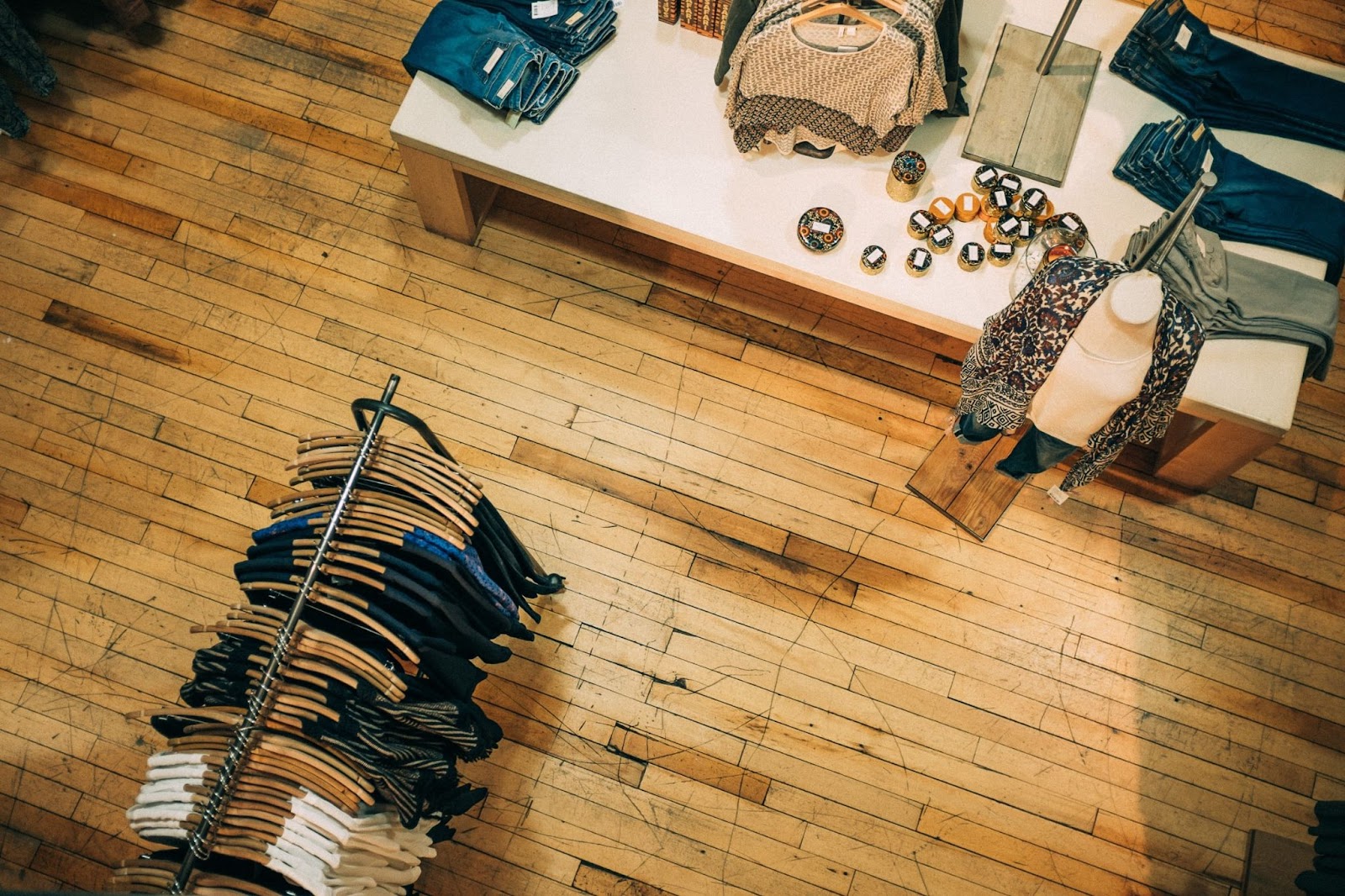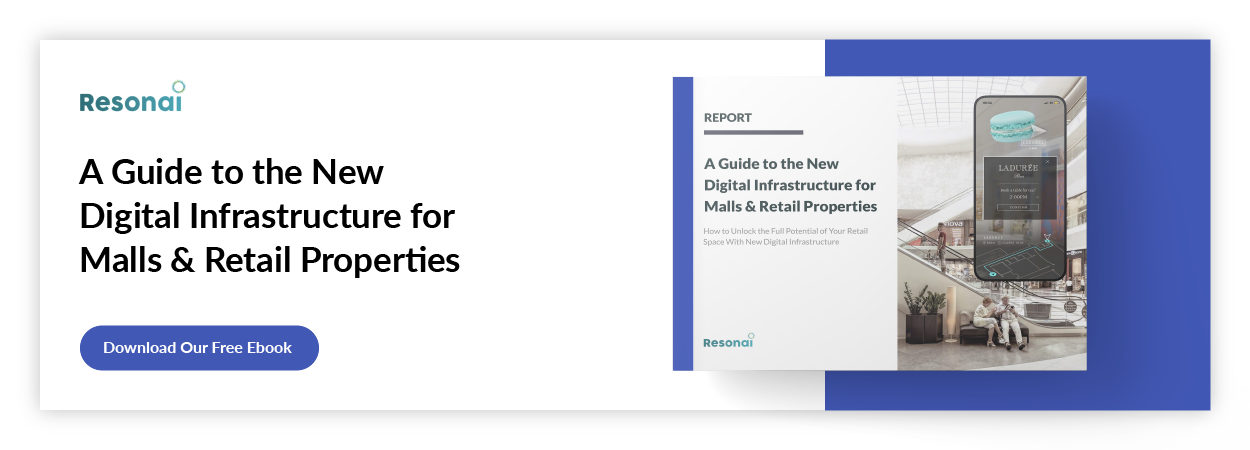Store Layout: The Ultimate Guide
Here’s how creating and optimizing a store layout can help a business grow.
 Retail store layout strategy is one of the biggest elements of the customer experience, influencing what they see and interact with, as well as dictating the time they spend in-store. Designers, architects, and building managers must work together to determine the best store layout for their business, pulling from the rich history of mercantile stores for inspiration.
Retail store layout strategy is one of the biggest elements of the customer experience, influencing what they see and interact with, as well as dictating the time they spend in-store. Designers, architects, and building managers must work together to determine the best store layout for their business, pulling from the rich history of mercantile stores for inspiration.
A successful store layout strategy will take into consideration human psychology, product categories, and customer flow to maximize results. Here’s how those elements should all come together.
Jump to a section…
The importance of store layout strategy
Store layout strategies that boost sales
How to apply a grid store layout
How to apply a racetrack store layout
How to apply a free form layout
Best practices for department stores
Best practices for clothing stores
The importance of store layout strategy
Your choice of store layout doesn’t have an immediate correlation with revenue, but its influence over consumer behavior can make a major difference on your bottom line in the long run. Using behavioral patterns to influence store layout design practices will improve the customer experience, which will in turn increase sales.
For instance, all store layouts should have a decompression zone that acclimatizes customers to their surroundings. This space gives shoppers a place to stop and catch their breath before walking through the store, which relaxes them and helps them focus on shopping. The area typically isn’t product-heavy, though research shows that the decompression zone can be a good area to sell high volumes of low-cost items, similar to checkout lanes.
For more information about retail store layout strategy, read our blog post, “The Importance of Store Layout in Sales.”
Store layout strategies that boost sales
Centuries of iteration have produced compelling layout strategies for retailers to adopt. Here are some of the most popular options and how they’ve been applied.
Grid store layout
The grid store layout is a staple of big box retailers and grocery stores, allowing customers to browse freely while maximizing display space. It’s perhaps the most common store layout strategy, so customers tend to understand it intuitively.
Racetrack store layout
A racetrack, or loop, store layout features a lane that circles around an entire store, helping retailers manage the flow of traffic and control which products customers see. In theory, customers will enter the store, walk around the racetrack, and pass every major section in a way that feels natural to them.
Free form store layout
The free form store layout doesn’t follow a single guiding principle, which can make its appearance seem simple. However, it’s perhaps the most complex layout in use. It’s a staple of boutique stores, allowing for more direct appeals to customer psychology than other layouts. Displays scattered asymmetrically throughout the store leave just enough space for customers to move freely through lanes.
For more on the nuts and bolts of store layout strategy, read our blog posts “5 Types of Store Layout Every Retail Pro Needs to Know” and “7 Retail Layout & Organization Strategies That Boost Sales.”
How to apply a grid store layout
Grid layouts should keep marketing material at eye level, making it easy for customers to view ads and increase engagement. Retailers can take engagement to the next level by implementing digital signage as part of their strategy, allowing them to display a wider variety of attention-grabbing marketing material at once to create a memorable experience. Check out our ebook to learn even more about how the new digital infrastructure is reshaping familiar retail spaces.
Besides placing marketing material at eye level, grid store layouts place daily essentials at the back of the store, increasing the odds that customers pick up additional items on their way to household necessities like eggs and milk.
For more information about the grid layout’s use cases, read “How a Grid Store Layout Affects Retail Sales.”
How to apply a racetrack store layout
To maximize a racetrack store layout’s effectiveness, special care should be taken to keep the loop clear of any debris or scattered product, thus keeping customers from getting frustrated with an obstructed path. Aisles should stem from the core loop like spokes from a wheel to an axle, allowing customers to easily access each department as they move around the circumference of the store.
For more information about the racetrack layout’s use cases, read “How a Racetrack Store Layout Affects Retail Sales.”
How to apply a free form layout
When designing a free form layout, keep consumer psychology at the forefront of every decision. People are more likely to buy something they touch and become less satisfied with their options as their number of choices increases. Those two psychological quirks can make the free form layout a top-tier strategy for boutique stores that emphasize demo stations and highly curated product selections.
For more information about the free form layout’s use cases, read “How a Free Form Layout Affects Retail Sales.”
Best practices for department stores
Department stores are the goliaths of the retail world, featuring a large selection of products for customers to peruse across a vast floor area. To maximize your space’s potential, keep in mind a few best practices.
- Feature services, not just products. Services such as a cosmetic salon in a beauty store can be a massive revenue driver thanks to their large margins. Plus, customers will typically browse products while they wait for their appointment, increasing sales for the products you already have.
- Use tilted fixtures. Tilted fixtures can redirect the flow of customers into locations that encourage them to spend more time browsing and engaging with similar products. The strategy is known as a “pinball design.”
- Encourage impulse buys at the register. A longtime strategy of supermarkets, stocking a selection of appealing high-margin products near the checkout stand can result in impulse buys. Candy, beverages, and magazines are all staples of front lanes.
For more on department store layout design, read “5 Department Store Layout & Architecture Best Practices For 2022.”
Best practices for clothing stores
Clothing stores need to emphasize their customers’ desire to pick up and try things on. To do so, making displays as eye-catching as possible is paramount. Here’s where to start.
- Play with color. Bold colors are excellent at attracting attention and can draw customers into a specific set of product displays.
- Overhaul your fitting rooms. Neutral, natural lighting can help give your customers an accurate idea of what clothes will look like when worn out in the wild, which can minimize returns.
- Use rotating displays. Your product displays should change with the seasons, swapping in new looks as the year presses on. Pair outfits together on display racks, making it more likely that a customer will try a pair of sandals to go with their new capris or boots with their sweater.
To learn more about clothing store layout design, read “5 Clothing Store Layout Must Haves for 2022.”
Store layout design tools
Retailers can use numerous tools to design a store layout with superior sales potential. Here are some of the best options on the market.
SmartDraw
SmartDraw’s main selling point is its easy-to-use app interface, which equips users with the ability to instantly drop in and align doors, shelves, and more while organizing store sections by color. As a bonus, the application can work from a browser, so it’s accessible virtually anywhere.
EdrawMax
EdrawMax doesn’t boast as many features as SmartDraw, but it does have a robust offering of symbols, colors, and templates for users to design layouts with. The interface falls in line with common office applications, so it should be fairly intuitive for designers of all experience levels to pick up and use.
Microsoft Excel
Microsoft Excel isn’t built for store layout design, but if you’re looking for software you may already have installed on your computer, it can be a powerful tool. By adjusting column sizes, heights, gridlines, and other elements, you can create impressive floor maps without investing time or money into a dedicated alternative.
For even more layout design tools, read our blog posts “5 Free Retail Store Layout Design Tools” and “The 5 Best Store Layout Makers & Design Software.”
No matter how you choose to design your store, you need reliable data to inform your decision-making process. Resonai’s Vera platform can help. With customer heat maps and engagement measuring tools built into the platform, Vera can help you enhance your store layout in impactful ways. Are you ready to learn more? Get in touch with Resonai today and set up a free demonstration.
Subscribe to Our Newsletter!
Read More
How a Grid Store Layout Affects Retail Sales
There’s a wide variety of potential store layouts, but the grid store layout has long been the most...
How a Racetrack Store Layout Affects Retail Sales
From quaint local shops to international retail chains, one common dilemma resonates with every...
Store Planning: The Ultimate Guide for Retail
Store planning is both an art and a science. Elements of behavioral psychology, geometry, and...

